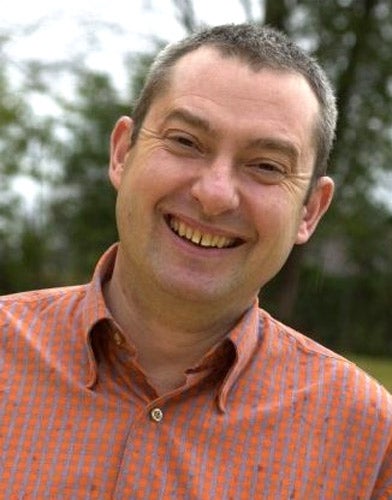Doctor Tony Hare: Conservationist, film-maker and co-founder of the charity Plantlife

The botanist, author, film-maker, conservationist, and campaign specialist Tony Hare truly established his conservationist credentials when he co-founded the charity Plantlife and became its first chair. Devoted to exploring and sharing nature for more than five decades, Hare was truly a renaissance figure, as enthusiastic about cooking, football and gentlemen's fashions as his studies of rare plants, such as the Small Fleabane (Pulicaria vulgaris) and the Least Lettuce (Lactuca saligna).
Hare joined Chris Packham to work on the children's environmental magazine wildlife programme A Beetle Called Derek (1989-91) and contributed to the Saturday morning show Going Live. He wrote a series of children's books, Save Our Earth, which reached large audiences – one on rainforest conservation was spotted in a Guyanan forest village. Generations of conservationists knew him and drew energy from his effervescent interest in popular culture, but as a highly individualistic all-rounder he never stayed with one team long enough to achieve the public recognition he deserved.
Born in West Runton on the North Norfolk coast in 1954, as a child Tony Hare filled the family home in with plants and creatures collected from the cliffs and wooded dells around Cromer. A keen member of Norfolk Young Naturalists, he was educated at Cromer Junior School and Paston Grammar before moving to Southampton to undertake a BSc, and then to Queen Mary College in London for his doctorate studies of the Small Fleabane and Least Lettuce. These two obscure plants of ephemeral habitats, easily destroyed by "tidying up" and the chemical intensification of land use, perhaps epitomised Hare's abiding concern with the inexorable and overlooked impoverishment of England's countryside, and our diminishing connection with native nature.
In the 1980s Hare railed against the ineffectiveness of conventional nature conservation trusts in the face of agri-business. He was later instrumental in setting up Plantlife, the national conservation group with ambitions to do for plants what the RSPB had for birds. It was his belief that environmental groups needed to buy land in order to protect it. Plantlife now owns over 4,000 acres. Joining the London Ecology Unit survey team, he discovered a celebrated pocket of land that had escaped chemical "improvement" along the meanders of the Yeading Brook in Hillingdon and so retained a medieval richness of flora. It is now known as "Hare's Hollows".
Before moving south, Hare was a junior film-maker in the Norwich Film-Making Co-Op and wrote and directed several films aired on television. Between An Englishman's Ears (1989) explored attitudes to land ownership and our countryside while The Norfolk Poacher was an elgaic portrait of the Norfolk countryside, following the nocturnal perambulations of an anonymous poacher. In the late 1980s and early '90s he joined the team at the charity Media Natura and helped create the TV programme The Years That Rocked the Planet, which recounted the history of the environmental movement up to the 1992 Earth Summit, to a soundtrack of popular music.
A campaigns communications specialist, Hare worked alongside some of the world's leading environmental organisations. His last trip was to work with WWF in Copenhagen, where he was instrumental in the Climate Savers Programme, which runs partnerships with mainly multinational companies to reduce their CO2 emissions. He earned a reputation for blending clear vision and a businesslike approach to environmental campaigning, as well as an ability to motivate at all levels. Once, following a Hare workshop, a Senegalese fisherman felt moved to fight for his fishing rights, and was successful.
Hare travelled widely, but frequently returned to check on the flora around Happy Valley below the lighthouse on the Cromer cliffs. His life was run through with an underlying sadness at how England was losing touch with the detail of nature, the plants and animals which he could name but which so many now cannot.
A few years ago he wrote: "One of my best-ever botanical moments was on a spring day in a daffodil wood in north Norfolk. From a high point I looked down on a sea of daffodils, all nodding and shaking in a faint breeze just warmed by April sun. Then among them a darker yellow caught my eye and I knew I had found what I was hunting. An engraving on the front of a rare local flora. An empty dot in the Atlas of the British Flora. Tulipa sylvestris, the wood tulip, the wild tulip. A botanical treasure in every way, slender and snakelike, scented. And, best of all, I'd refound it."
Chris Rose and Diana Hare
Tony Hare, botanist, author, film-maker and conservationist: born West Runton, Norfolk 15 July 1954; partner to Amanda Greatorex (two sons); died Cromer 6 January 2010.
Subscribe to Independent Premium to bookmark this article
Want to bookmark your favourite articles and stories to read or reference later? Start your Independent Premium subscription today.

Join our commenting forum
Join thought-provoking conversations, follow other Independent readers and see their replies